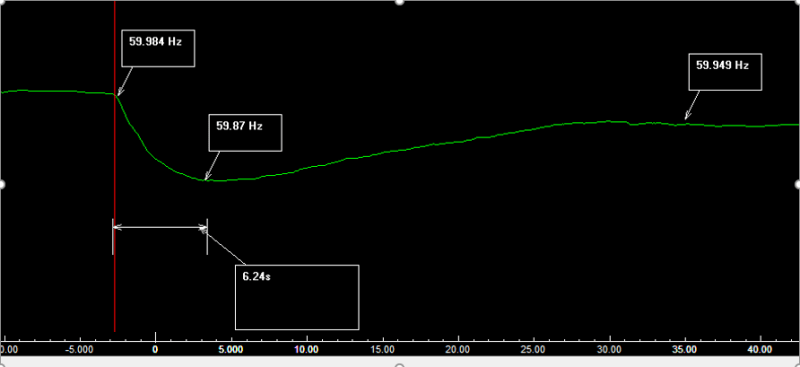I think this is possible if the condition is spread across a very wide range... Ie Quebec say 60Hz, Ontario at 59.87...
This may not be well-known, but [other than for one exception which I will explain later] the Hydro-Québec / Trans/Énergie system is only connected asynchronously to the rest of the Eastern Interconnection, i.e. outside of Ottawa, Ontario via the AC-DC-AC converters at the Outaouais station, between Québec and the state of New York at Chateauguay, etc.
This is not to say that synchronous connection has never been made, but it has always been inadvertent and typically will not last much more than five minutes.
The worst case scenario is that, because the connection is unstable, the flow through the tying circuit oscillates ever larger, eventually crescendo-ing to an automatic trip on overload. The other much more preferable scenario is that the inadvertent paralleling of the two systems is recognized and caught by a power system controller who independently separates the two systems as the flow through the tie point pass through zero. Experience has shown this to be the much less impactive option.
The exception mentioned above is explained in part of an e-mail I received:
"The northern Vermont local grid is divided into sub-grids that can be connected to either the Quebec or Vermont power system without interrupting service. The line 1400 is energized from Stanstead and loads are connected at Newport. VELCO regulates deliveries from HQ by switching loads between the Québec and the New England systems. This regulation mode is commonly referred to by us as "block loading".
"Since the HQ and NEPOOL systems are operated asynchronous, loads must be connected to either one or the other, but not both simultaneously (except during switching). The actual transfers are accomplished by an automatic device when HQ and NEPOOL systems momentarily drift into phase. This transfer of loads between HQ and NEPOOL without power interruption is commonly referred to as a "quick switch."
"Quick switches are accomplished by momentarily connecting the load being transferred to both sources "in phase" and then disconnecting one of the sources before the systems drift out of phase. Once initiated, it may take several minutes for the two systems to come into phase and the actual switching (connecting and disconnecting) to take place."
CR
"As iron sharpens iron, so one person sharpens another." [Proverbs 27:17, NIV]


